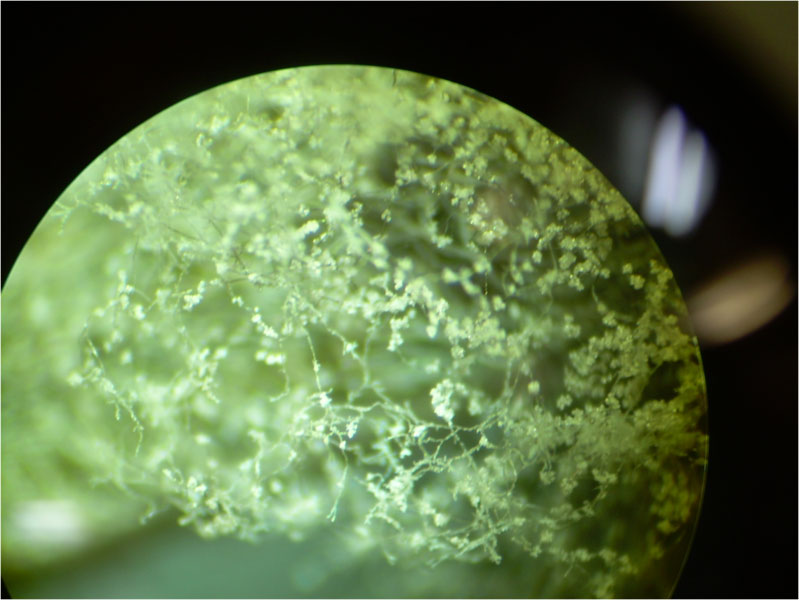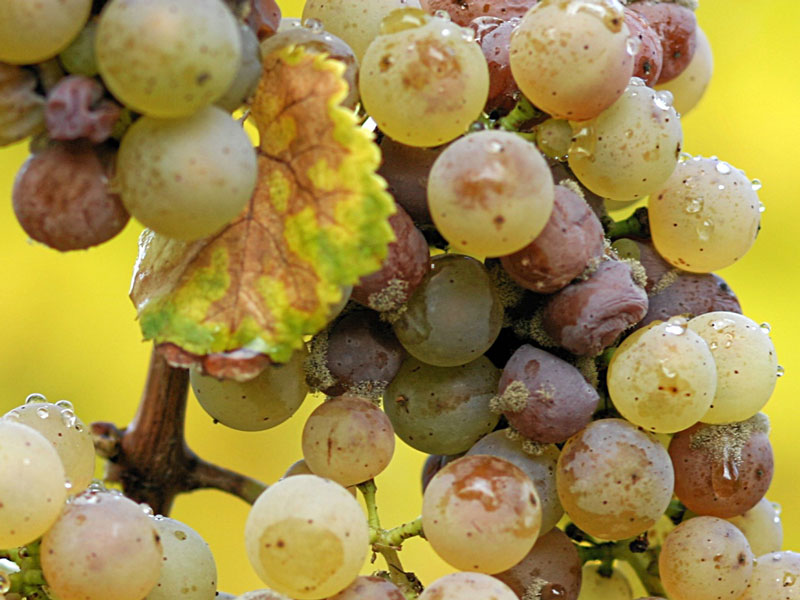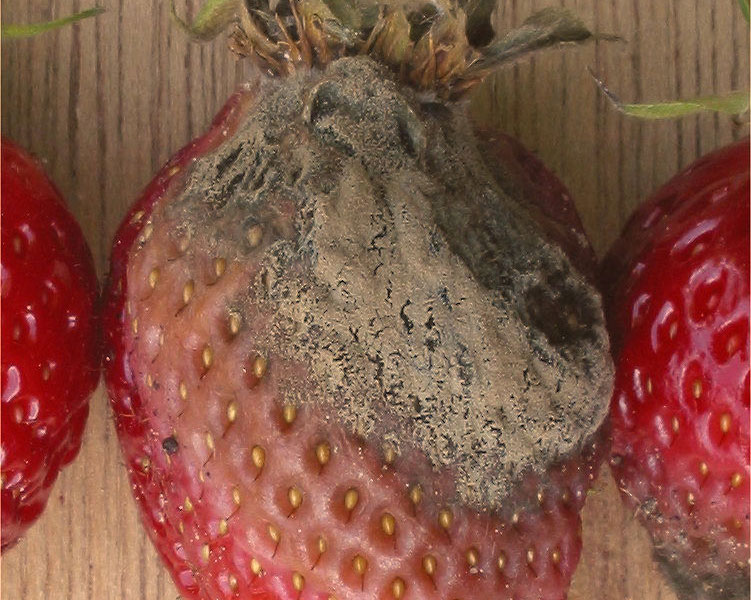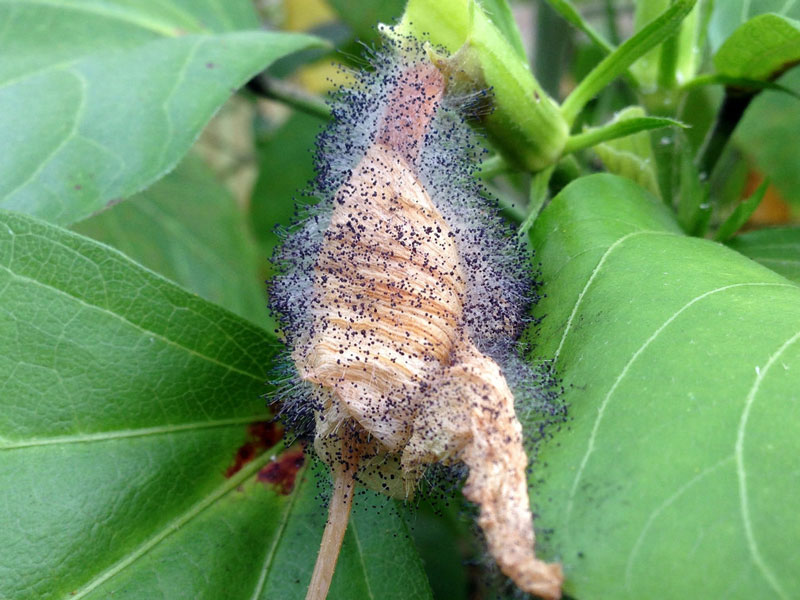What Is Botrytis?
Botrytis is a genus of anamorphic fungi belonging to the Sclerotiniaceae family. Considered by many to be archetypical examples of necrotrophic fungi, they are primarily known for the damage they cause to hundreds of plant species, notably grapes, raspberries and strawberries.
The most common species of Botrytis, B.cinerea, is commonly referred to as gray mold. It first attacks a plant in the form of a white growth which over time develops into a gray mass with a velvety appearance. The gray colour originates from asexual spores (conidiospores) which can be spread by water or wind.
Botrytis molds mostly occur in the asexual (anamorph) forms, but sexual (teleomorph) forms have also been described. Most Botrytis species are plant parasites, but some of its species are saprophytes.
Known Botrytis species

Botrytis has about 30 species that have been scientifically identified [1]. The most common species is B. cinerea which is subject to extensive study owing to its substantial economic impact. B. cinerea is exceptional in that it affects about 1000 species of plant host [2], whereas other species only affect a few hosts with some being host-specific. B. fragariae is a recently discovered species which affects strawberries and is also of great economic importance [3].
Other common species of Botrytis fungus are B. anthophila, B. allii, B. fabae, B. tracheiphila, B. squamosa, B. ampelophila, B. artocarpi, B.carnea, and B. anacardii.

Adaptability of Botrytis
Adaptability refers to how an organism changes or adjusts to fit and survive in its changing environment. Over time, Botrytis species have proved to be adept at changing their morphology and function, which to enables them to live in many different environments and infect such a wide range of plant hosts. For example, B. cinerea has been found to exhibit many phenotypic and genotypic variations.
Various Botrytis species have also developed resistance to many fungicides [4], thus being able to fight back against human intervention.

Where to find Botrytis mold at home?
Botrytis molds are frequently found in damp areas of homes and in gardens. You can find the gray mold on wounded plant tissue, including fruits, flowers, leaves, shoots and storage organs. Plants produce localized lesions when attacked by Botrytis molds, which are usually visible to the naked eye. However, it has recently been shown that plants do not always show symptoms upon infection, and can often show delayed symptoms once the fungus has already spread to various parts of the plant [1]. They are common outdoors but can also be found on plants that are grown indoors or in greenhouses.
Although it develops on plants, Botrytis spores can be found in indoor and outdoor air throughout the world. Excessive inhalation of these spores can cause allergies and other respiratory issues [5].
How to identify Botrytis?
To know that your plants have been infected by gray mold, be on the lookout for spots on leaves, stems, buds, and petals that appear whitish and seem to be water-filled.
These spots will start to turn greyish and finally brownish, making them easily mistakable for brown mold. If the humidity is extremely high in your home, you may notice web-like structures covering the leaves, possibly spreading and making the flowers appear grey when observed from afar.
These fuzzy structures contain thousands of microscopic spores that can become very active and can spread at the slightest activity.
What causes Botrytis?
The development of Botrytis molds, or gray molds, is mainly caused by moisture. They occur on wet plant surfaces and can infect almost every common plant species. They tend to affect plants that are injured or damaged and are on the verge of dying.

Once it infects any section of a plant, it can quickly spread to other healthy parts of the plant. Spores can spread whenever triggered by any action, such as wind or rain. Although wind and rain are mostly absent from greenhouses, their enclosed nature means that Botrytis species can spread rapidly, often causing significant damage.
Favorable conditions for Botrytis growth
Botrytis spores germinate under these favourable conditions:
- An optimum cool temperature of 22°C to 25°C
- Relative humidity of 85% and above
- Loose moisture on the surfaces of buds, leaves, and stems
- Poor ventilation and air circulation
Benefits of Botrytis
Botrytis molds are generally harmful to plants. However, as some species are saprophytes, they lead to decay and decomposition, hence contributing to biomass and nutrient cycling. If it is ensured that the mold doesn’t multiply and cause harm to other plants, these soil enriching effects can have a positive impact on plant life.
In winemaking, B. cinerea can often be a desired visitor. Often called “noble rot”, B. cinerea infection dehydrates grapes, thus increasing sugar concentration. This results in the production of sweeter wine with a unique flavour. However, a balanced infection which leaves enough grapes intact for harvesting is difficult to achieve.
Effects Of Botrytis on plants
This mold causes serious plant infections such as onion neck rot. It is also associated with gray mold on seedlings as well as apple rot. The symptoms of the disease are rot, blight, wilting, and dark spots on the infected plant parts. It can affect almost all parts of its host and causes significant pre- and post-harvest losses of many fruits, vegetables and ornamental flowers.
Effects Of Botrytis to humans
“Winegrower’s lung” is a very rare allergic reaction of the respiratory system that is caused by B. cinerea in predisposed persons. Furthermore, several researchers have associated Botrytis spores with allergies and other respiratory issues [5].
Preventing Botrytis Infection
When it comes to preventing Botrytis infection, the first step is to observe the highest possible levels of hygiene and make sure your plants are dry. Proper sanitation can go a long way.
When pruning or doing any maintenance of your plants, ensure you take care not to cause any injuries. Botrytis molds can take advantage of such damages to infect the plant.

Also, clean thoroughly between your plants as often as possible, removing dead leaves, decaying matter, and debris. You might also want to ensure there is enough space between outdoor plants to allow for air circulation and minimize the spread of Botrytis if it ever occurs.
If transplanting, avoid using plant parts that are infected or damaged. You can alternate your plants to control Botrytis infection. Last but not least, ensure that humidity is lowered in greenhouses by using proper heating and ventilation.
How to treat Botrytis?
First, clean your plants thoroughly to avoid spreading the disease to healthy plants. It is also advisable to employ the use of fungicides to control the spread of infection. Such fungicides include Thiram, Tebuconazole, Trifloxystrobin, Iprodione, and Chlorothalonil. Some Botrytis species, however, exhibit resistance to certain fungicides.
Another viable measure is to remove infected plants or plant parts and destroy them. For infected strawberry plants, apply biochar – a form of charcoal than can help to reduce the severity of the infection.
Certain bacteria can be used as biological control agents for Botrytis control in greenhouses such as Bacillus subtilis, Trichoderma harzianum, Streptomyces griscoviridis, and Streptomyces lydicus.
If you need any advice, don’t hesitate to call on the services of professional mold removal experts like Mold Busters.
Facts about Botrytis
- If incubated for seven days on potato sugar agar at 25°C, Botrytis rapidly grows to a diameter of 3-9cm.
- Botrytis molds can produce more than 60000 spores on an area of plant tissue the size of a fingernail.
- About 50% of greenhouse operations have proved resistance to dicarboximide fungicides (FRAC Group 2).

Did you know?
The #1 toxic mold type found in homes is the Penicillium/Aspergillus mold group?! Find out more exciting mold stats and facts inside our mold statistics page.
References
- van Kan JA, Shaw MW, Grant-Downton RT (2014). Botrytis species: relentless necrotrophic thugs or endophytes gone rogue? Mol Plant Pathol. 15(9):957-61.
- Elad Y, Pertot I, Prado AMC, Stewart A (2016). Plant hosts of Botrytis spp. In: Botrytis, the good, the bad and the ugly. Springer, New York, NY. pp 413–486.
- Rupp S, Plesken C, Rumsey S, Dowling M, Schnabel G, Weber RWS, Hahn M (2017). Botrytis fragariae, a New Species Causing Gray Mold on Strawberries, Shows High Frequencies of Specific and Efflux-Based Fungicide Resistance. Appl. Environ. Microbiol. 83 (9) e00269-17.
- Weber RWS, Hahn M (2019). Grey mould disease of strawberry in northern Germany: causal agents, fungicide resistance and management strategies. Appl Microbiol Biotechnol. 103(4):1589-1597.
- Jürgensen CW, Madsen AM (2009). Exposure to the airborne mould Botrytis and its health effects. Ann Agric Environ Med. 16: 183–196.

Get Special Gift: Industry-Standard Mold Removal Guidelines
Download the industry-standard guidelines that Mold Busters use in their own mold removal services, including news, tips and special offers:

Written by:
John Ward
Account Executive
Mold Busters
Fact checked by:
Michael Golubev
General Manager
Mold Busters
